(Note: This is one of those occasional posts adapted from something I originally wrote elsewhere. This one came from an online discussion of the relative merits of DSLRs and mirrorless cameras and their abilities to work with various lenses and photographic subjects. I have edited the original slightly for its re-use here.)
With all of the recent (justifiable!) interest in new mirrorless camera developments from Sony, there are factors that may persuade some photographers to go slow on giving up DSLRs for mirrorless. (It may also convince them to do what I did — I augmented my DSLR system with a second mirrorless system.) As good as mirrorless cameras are becoming, in particular the full frame Sony A7r and newer A7rII, they have their pluses and minuses when it comes to real-world photography. They can do some things quite well – there are advantages in some cases to the electronic viewfinders, Sony sensors provide state-of-the-art dynamic range, the bodies are compact, and more. They do some things less well — native lenses are few, other lenses require adapters, the autofocus systems are slower than DSLRs, there are still latency issues with the viewfinders, and so on.)
In this context, I recently realized that one of the nice things about the new Canon EF 100-400mm f/4.5-5.6L IS II Lens and the newer Canon bodies (like my 5Ds R, which is very similar to the 5Ds) is that they now autofocus (AF) quite well at f/8. The 100-400 len’s maximum f/5.6 aperture at the long end is no longer a barrier to getting 560mm out of the lens by adding the TC.
I’ve only tried the combination on one occasion so far, when the opportunity to photograph wildlife came up on a recent photography venture along the California coast. I put the 100-400 version II and the Canon 1.4x TC on my 5DsR and photographed two wildlife subjects, elephant seals lounging on a beach and pelicans doing everything from flying past to landing to sitting still. (For those who want more information than I can provide here, I wrote about the initial results in a another article.)
While I do not recommend that people whose primary photographic focus is birds in flight rush out and get a 5Ds or 5Ds R, a 100-400 v2, and a 1.4x TC as their primary setup, it does work decently and in some cases extremely well. Most importantly, it means that my primary landscape photography setup and can also work very effectively with non-landscape subjects, including wildlife — a task that will severely challenge the best current mirrorless options.
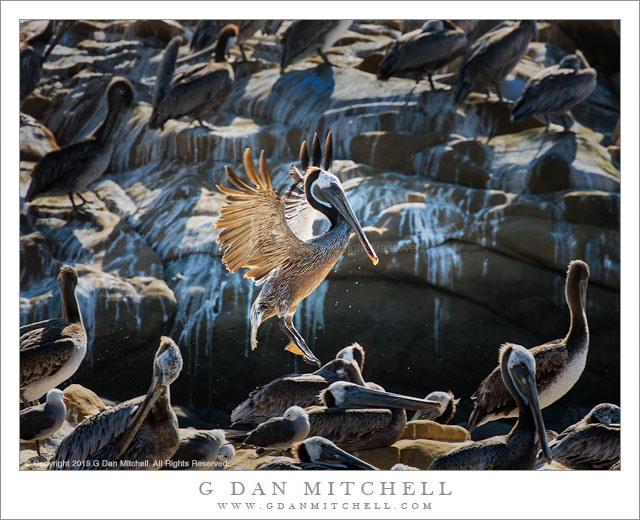
The combination focuses well and provides good resolution, even with moving subjects — though, obviously, not as well as using something like a 1Dx with a 300mm f/2.8 prime. It is good enough that I can track birds in flight and catch sharp photographs of them in motion.
One question is whether the system will AF on an approaching target. The answer is yes. Again, other setups will do so with more speed and perhaps accuracy, but this works well — well enough that I can get good photographs of such things.
With stationary targets it works very well. My elephant seal photographs made with this gear have excellent image quality. Because these critters are not exactly active for the most part (except when they occasionally rouse themselves to do momentary battle) I worked from the tripod, mostly at 560mm.
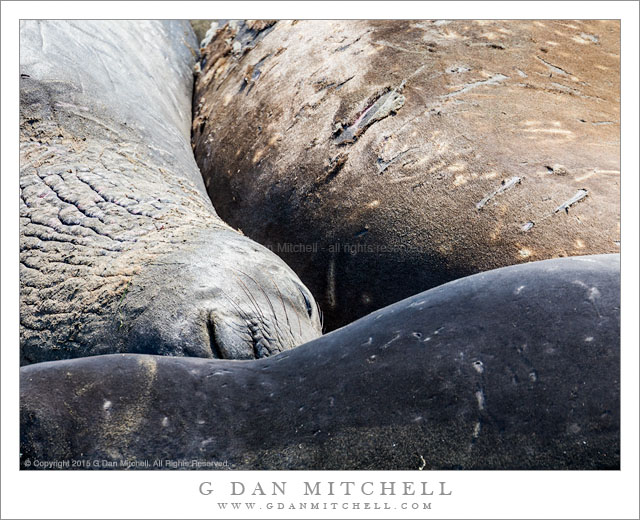
This brings up another point. My main subject on this particular photographic venture was not wildlife — it was landscape/seascape photography. For this I work completely from the tripod, often composing in the optical viewfinder and then working in live view to refine the composition and (most important) check manual focus (which is how I roll with landscape) and exposure and so forth.

For me it is often important to be ready to photograph a range of subjects as they become available. Here I was shooting landscape but I was able to quickly move to photographing birds in flight effectively with the same gear. When I go out specifically to photograph birds I often go the opposite direction.
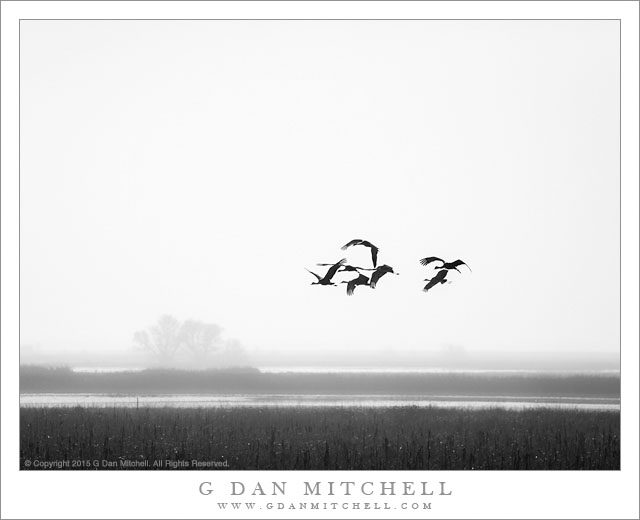
I often shoot landscapes and wildlife at the same time with the same equipment. I might be photographing migratory birds on a foggy Central Valley morning when I spot a landscape subject.
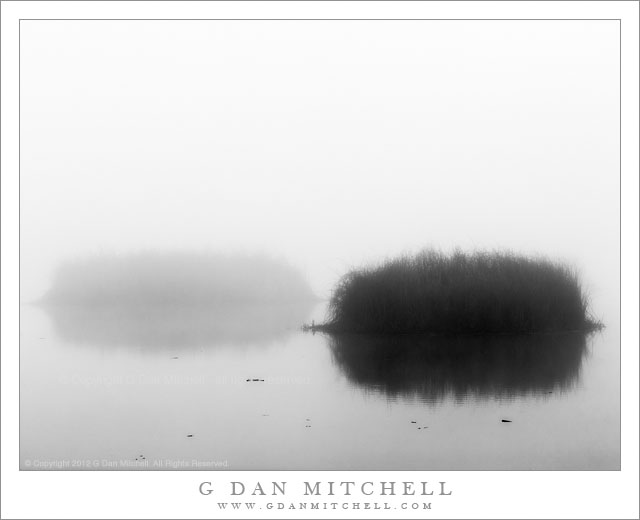
So, for some of us, genres overlap and when we select a camera and lenses we are considering how the equipment will function for a range of likely/certain uses. And for many purposes, the DSLR still provides the best all-around combination of image quality and responsiveness and versatility
Don’t get me wrong. I love using my mirrorless camera and a few primes for some subjects, and I go back and forth between regarding the DSLR as my primary camera for some subjects and the mirrorless as my primary for some others.
For some things and some photographers a mirrorless camera like the Sony A7r or A7rII or my own little Fujifilm system can be exactly the right thing:
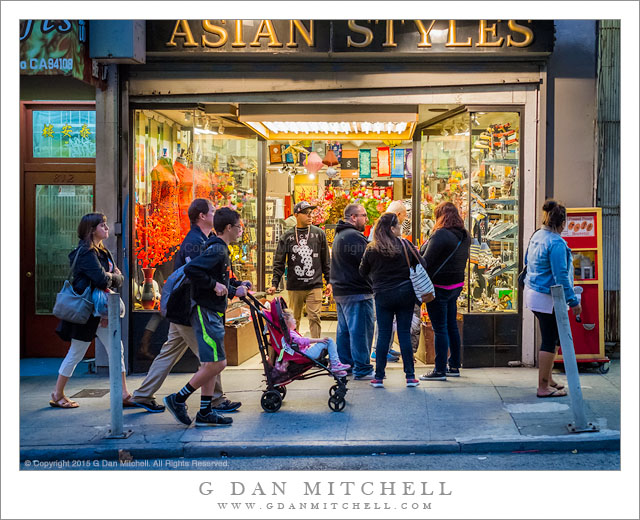
When people ask me for camera recommendations, I frequently recommend the mirrorless options for folks whose subjects and shooting styles seem to match up best with these cameras. (I’ve been shooting a mirrorless camera for 2 1/2 years now. After carefully considering all of the options from a range of manufacturers in light of my particular use pattern, I ended up with a Fujifilm system but I realized that for a photographer in a somewhat different situation than mine the Sony or other options could be compelling. In fact, I regularly photograph with friends and fellow photographers who use the A7r to do beautiful work, and we frequently compare notes.)
As I write so often, it is a great time to be a photographer. We have so many excellent options from 4/thirds systems though cropped sensor and full frame right on up to increasingly available medium format options. Cameras come in formats from rangefinder-style, through the many interesting and innovative mirrorless choices, through increasingly powerful and sophisticated refinements of DSLRs. A wide range of manufacturers continue to improve and innovate: Canon, Nikon, Sony, Fujifilm, Olympus, Pentax, and many more.
There is no reason to get distracted by passionate fanboy arguments about this brand or that brand, or about one type of camera versus the others. As an alternative to categorizing things into two categories — Godlike Perfection versus Deficient in All Ways That Matter — we can take a rational look at features and their applicability, thinking about pluses and minuses of various options and selecting among them for our particular purposes, while not having to resort to likely flaws in the character and morals to explain the wrong-headedness of those who make a different choice. We can find lots of excellent options that match more and more closely our own specific photographic needs and get on with the real goal, making photographs, a goal for which all of these products can be outstanding tools.
Wouldn’t you agree? :-)
Dan
© Copyright 2015 G Dan Mitchell – all rights reserved.
 G Dan Mitchell is a California photographer and visual opportunist. His book, “California’s Fall Color: A Photographer’s Guide to Autumn in the Sierra” is available from Heyday Books and Amazon.
G Dan Mitchell is a California photographer and visual opportunist. His book, “California’s Fall Color: A Photographer’s Guide to Autumn in the Sierra” is available from Heyday Books and Amazon.
Blog | About | Flickr | Twitter | Facebook | Google+ | 500px.com | LinkedIn | Email
All media © Copyright G Dan Mitchell and others as indicated. Any use requires advance permission from G Dan Mitchell.
Discover more from G Dan Mitchell Photography
Subscribe to get the latest posts sent to your email.
